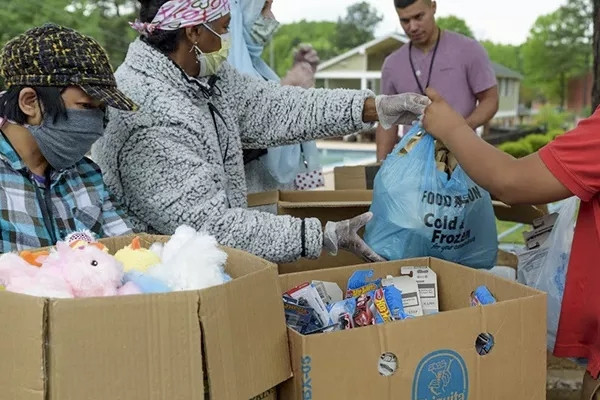Reopening Schools: Afterschool Stands Ready to Help

What will school look like for our kids this fall? Millions of parents are wondering—and worried.
This year, our kids will “return to school” having lost months of learning. Many are struggling with social disconnection, fear, hunger, anxiety, trauma. Parents are weary after months of quarantine and summer shutdowns, anxious about their kids’ well-being, and need to get back to work.
Like many parents, I have more questions than answers about the upcoming school year. Here in North Carolina, Governor Roy Cooper just announced our state will use a mix of in-person and online learning this year. I’m wondering if it’ll be safe for my kids to go back to school and how effective remote learning will be.
To say our family struggled with remote learning when COVID-19 forced our schools closed in March is an understatement. Three of my four kids struggle to keep up with school during a “normal” semester—online learning was frustrating and fruitless for them. It even proved challenging for my oldest son who’s an honor student.
On a typical remote school day, my kids had very little interaction with their teachers, a confusing schedule of Zoom meetings, a long list of online assignments, trouble submitting completed work, and dozens of questions. I’m fortunate to have some flexibility with my job, but trying to manage remote school while keeping up with work and family responsibilities just isn’t feasible—or healthy.
Schools are struggling too. State leaders and local school boards are grappling with the massive, uncharted task of bringing kids back safely, helping them catch up, and keeping them engaged over an unpredictable year.
Schools need support. Families need better options. Here’s some good news: afterschool programs stand ready to help.
Afterschool providers have deep relationships with families and community partners, and a long history of coordinating services to meet students’ needs. They offer safe, developmentally rich settings for learning and are able to step in with flexibility to provide consistent care as school schedules shift.
In fact, many afterschool programs innovated and remained open during COVID-19 closures.
Programs like ourBRIDGE for KIDS, which continues to partner with our local schools,
restaurants and nonprofits to deliver 9,000 meals each week to hundreds of families on Charlotte’s
east side. ourBRIDGE serves
as a critical link between families and schools. Staff check in with students
when teachers notice they are missing online sessions and translate school materials
for parents in Arabic, Burmese, Farsi, French and several other languages.

Like ourBRIDGE, afterschool providers in every state are available to help address logistical and budget challenges our schools face. They bring critical resources—facilities, staff, expertise, connections—that can help schools expand learning opportunities, support kids’ social and emotional development, and help parents return to work.
Before the pandemic, demand for afterschool was high: more than 10 million kids nationwide participated, nearly twice as many were waiting for an available program. The demand may increase as programs pivot to accommodate staggered school calendars.
It’s more important than ever for school time and out-of-school time to work together as true partners. This means involving afterschool leaders in our schools’ reopening plans now to assess needs, identify pain points and share resources. We must also establish a thoughtful distribution of resources between schools and afterschool programs to alleviate budget constraints and ensure students’ academic, social and emotional needs are met.
Here are two ways you can help!
Email your child’s principal and urge your school to make afterschool programs part of its reopening plans.
Add your name to this open letter from the Afterschool Alliance to let school leaders know that families need afterschool programs.
Together, our schools and afterschool programs can build a more coordinated model for reopening that will help our kids and families emerge from this crisis strong, resilient and hopeful.